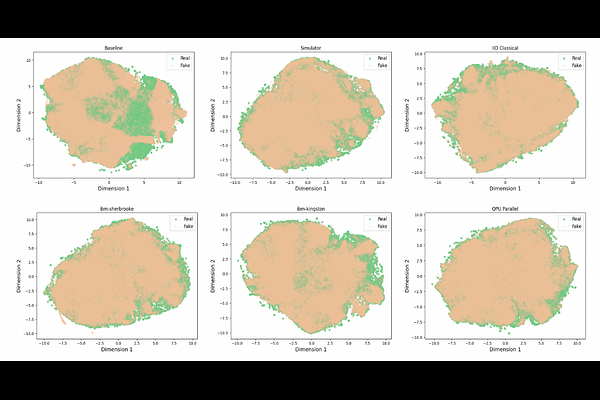Improving GANs by leveraging the quantum noise from real hardware

Improving GANs by leveraging the quantum noise from real hardware
Hongni Jin, Kenneth M. Merz Jr
AbstractWe propose a novel approach to generative adversarial networks (GANs) in which the standard i.i.d. Gaussian latent prior is replaced or hybridized with a quantum-correlated prior derived from measurements of a 16-qubit entangling circuit. Each latent sample is generated by grouping repeated shots per qubit into a binary fraction, applying the inverse Gaussian CDF to obtain a 16-dimensional Gaussian vector whose joint copula reflects genuine quantum entanglement, and then projecting into the high-dimensional space via a fixed random matrix. By pre-sampling tens of millions of bitstrings, either from a noiseless simulator or from IBM hardware, we build large pools of independent but internally quantum-correlated latents. We integrate this prior into three representative architectures (WGAN, SNGAN, BigGAN) on CIFAR-10, making no changes to the neural network structure or training hyperparameters. The hybrid latent representations incorporating hardware-derived noise consistently lower the FID relative to both the classical baseline and the simulator variant, especially when the quantum component constitutes a substantial fraction of the prior. In addition, we execute on the QPU in parallel to not only save computing time but also further decrease the FID up to 17% in BigGAN. These results indicate that intrinsic quantum randomness and device-specific imperfections can provide a structured inductive bias that enhances GAN performance. Our work demonstrates a practical pipeline for leveraging noisy quantum hardware to enrich deep-generative modeling, opening a new interface between quantum information and machine learning. All code and data are available at https://github.com/Neon8988/GAN_QN.git.